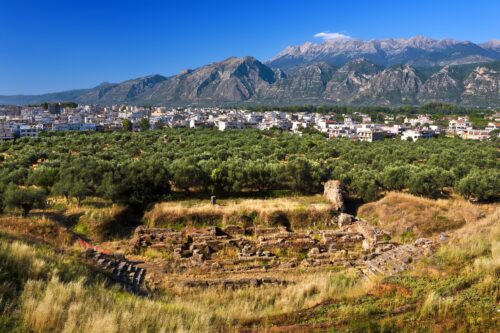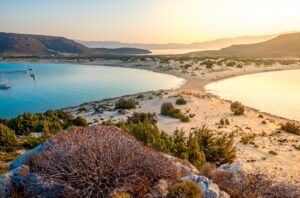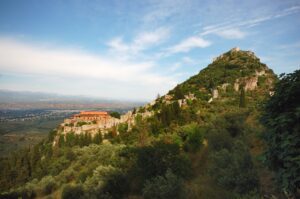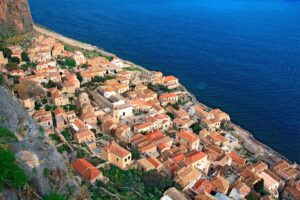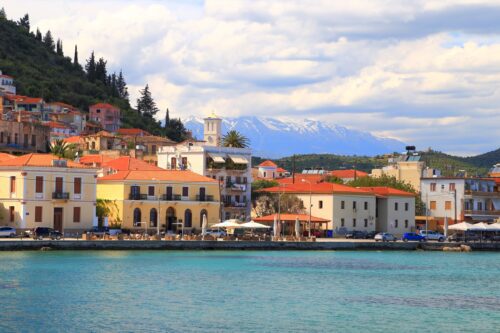Myrtoo Sea
The romantic amphitheater, The greek fiord
Kiparissi
Princess Diana had chosen to spend her last holidays in Kyparissi, mainly due to how naturally secluded it is and how romantic the landscape feels at dawn or sunset. Its original name in ancient times [Kyfanda: Bent and crooked] tells tales about its steep gorges, its bowed and curved mountains and hills.
On leaving the mountain behind you, on your way to the three suburbs – Vrysi, Metropolis and Paralia, the magnificent view of Myrtoo Sea takes your breath away. You stand on what is the best spot in the middle of a natural amphitheatre, facing a superbly set stage. Your eye goes from firs and cypress to white pebbles and sapphire waters in Megali Ammos, the most extensive beach in Kyparissi. The colourful houses remind you of those in Greek islands; the cafes will hospitably give you moments of relaxation, and a string of churches or chapels are there to unravel their long history.
There are countless hiking routes, one of which will take you to the Cave of Mbambola, with four chambers of stalactites and stalagmites explored in 1960. In Vrysi, you will marvel at Asklepieio, carved on a rock, and visit the ancient city of Kyfanda and the small chapel of Madona of the Rock. In Paralia, you will single out the Church of Agia Triada and the Metropolitan Church of Evagelismos.
Gerakas
In a tranquil recess of southeastern Laconia, Nature has done us all human mortals a favour, imaginatively creating with excellent surgical precision an inlet and a bay, cherished destinations for many touring boats in the summer. Gerakas and its Port constitute one of the most picturesque villages in the Prefecture. The traditional houses with colours reminiscent of an island, fish taverns and the peaceful still waters of the lagoon all add to a symphony orchestrated by a magnificent maestro.
On a hilly bulge overlooking the port, you will find the relics of an ancient city built by Zareka, a Lacedaemon hero. In that same spot, the fortress and the — "acropolis" of the city were built in the Hellenistic times. In late ancient times, a triclite Christian church was erected in the citadel's interior. An enormous basilica of early Christian times came to light in the southwest of Saint Athanasios church thanks to the excavations of Xyggopoulos.

